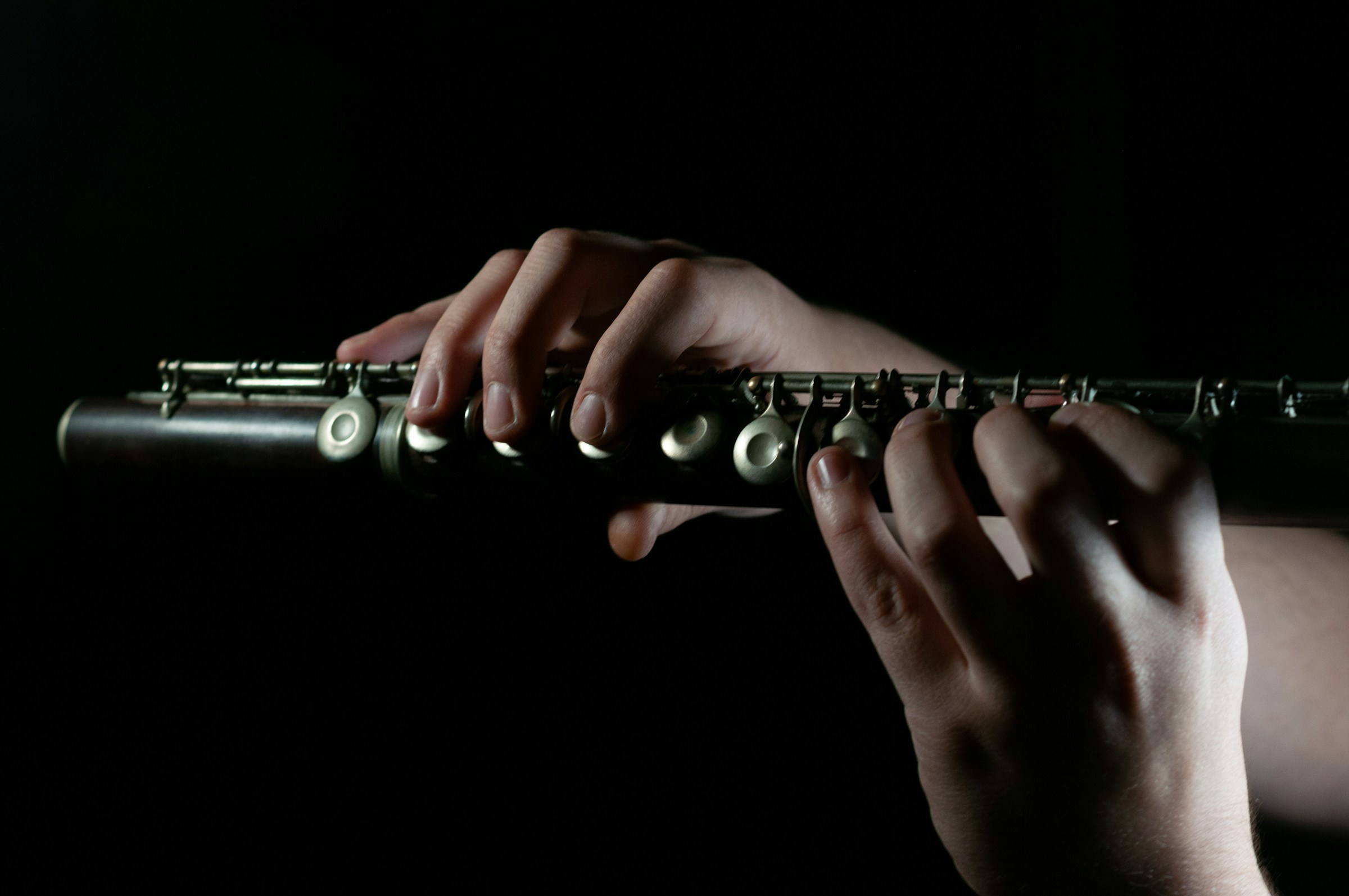Consider you're working on your latest project, and you've found the perfect instrumental track to sync with your visuals or podcast. But before you hit the download button, a question pops up: Is instrumental music copyrighted? This isn't just a minor detail. It could have major implications for your work, legally and creatively. In this article, we’ll clarify whether instrumental music is copyrighted, helping you make informed decisions for your projects. We will also touch upon AI pitch correction.
To assist you further, we’ll introduce Musicfy’s AI voice generator, which offers practical solutions for working with copyrighted music, ensuring your creativity stays uninterrupted.
If you can't wait to use Musicfy's Free AI Voice Generator, you can try out 1000+ celebrity voices, like:
You can use all of these voices and 1000+ more for free today on create.musicfy.lol!
Table of Contents
Complete Step-by-Step Guide On How To Use Musicfy's AI Voice Generator
Create Viral Music In Seconds For Free with Musicfy's AI Music Generator
What Is Instrumental Music and Can It Be Copyrighted?

Instrumental music is any track without vocals. It’s just sound — beats, melodies, chords, synths, drums, maybe strings or piano—but no singing or rapping.
Examples include:
A piano solo
A lo-fi hip-hop beat
A classical symphony
A trap instrumental made by a music producer
Background music used in YouTube videos or podcasts
Even if you’re just hearing drums and synths with no words, it still counts as a complete piece of music.
Can Instrumental Music Be Copyrighted?
Yes — absolutely.
Here’s why:
Under copyright law (in most countries, including the US, UK, EU, and Nigeria), the moment someone creates an original musical work, it is protected. That includes:
The melody
The chord progression
The rhythm
The arrangement of instruments
The overall sound structure
It does not need lyrics or vocals to qualify. Many legendary works (think Beethoven, Hans Zimmer, or EDM producers like Deadmau5) are entirely instrumental and highly copyrighted. So, if someone creates a beat or instrumental — whether it's a lo-fi loop or a complex jazz solo — that work belongs to them by law, using it without permission can lead to copyright infringement, even if you didn’t know.
Real-Life Examples
Let’s say you downloaded a fire instrumental from YouTube or TikTok and added your own lyrics on top. If you didn’t create the instrumental or have permission to use it, you're using copyrighted work — even if you "changed it" or gave credit.
Examples of copyrighted instrumentals include:
A beat made by a YouTube producer
A royalty-based composition on SoundCloud
The soundtrack to a Netflix show
A movie trailer score
A video game background theme
Even background music in a YouTube vlog is usually protected unless it’s royalty-free or properly licensed.
What About AI-Generated Instrumentals?
This is where tools like Musicfy, Beatoven, and Suno change the game.
When you create instrumental music using Musicfy:
You generate an original arrangement using AI
The result is yours to use, provided you follow the tool’s terms.
You avoid accidental infringement because it’s not pulled from someone else’s song
These tools are invaluable for beginners who want to start making music without the risk of inadvertently using someone else’s work.
Related Reading
• How to Create a Music Album
• What Does EP Mean in Music
• What Is Indie Music
• What Is Pop Music
• What Does Transpose Mean in Music
• Can ChatGPT Write Music
• How to Make Music at Home
• What Is the Most Popular Music Genre in the World
• How to Make Electronic Music
Complete Step-by-Step Guide On How To Use Musicfy's AI Voice Generator
Video Guide
Written Guide
1. Download An Audio File or Find A Youtube Link For A Song That You Want To Use for A Voice Over or An AI Song Cover
2. Go To Create.musicfy.lol
You will land on this page

3. Upload Your Audio File
You can upload the audio file, or you can upload a Youtube link
Upload Audio File:

Upload Youtube Link:


4. Optional: Click 'Advanced Settings' To Customize Your Remix


5. Choose The Artist That You Want To Use For The Cover
Let your imagination run wild - the possibilities are unbounded ⬇️


6. Click the 'Generate' button


7. Click 'Download' and You're Set To Go!
8. Post On Socials and Go Viral 🚀
Let us know if you have any questions. We're always happy to help the next generation of innovators in this space.
5 Common Misconceptions About Instrumental Music and Copyright

1. YouTube Doesn’t Mean Free for All
Why are so many tracks labeled "FREE BEAT" or "FREE TO USE" on YouTube? It’s tempting to think they’re free from copyright. But copyright still applies. Even if a track is labeled "free," the creator owns it. They usually specify how you can use it, often in the description. "Free" often means for listening only, or non-commercial use. If you monetize the track, you could violate the license.
YouTube’s Content ID system can detect this and issue a strike or takedown. Always read the description and check the license terms. When in doubt, contact the producer or use royalty-free options, such as Musicfy.
2. Instrumentals Are Copyrighted Too
Thinking that instrumentals aren't protected because they lack lyrics is a common misconception. Copyright law protects music and lyrics separately. A melody or drum loop can be copyrighted even without vocals. An instrumental track can trigger copyright flags just as a complete song can. You can’t just strip vocals and assume it’s free to use. You could get flagged or sued for using a beat even if you never touched the lyrics.
3. Credit Isn’t Permission
Creators often think that crediting the artist means they’re respecting the work, so they’re in the clear. But copyright is a legal right. Using someone’s work without a license is infringement, even if you credit them. Unless the artist explicitly said you can use their instrumental, giving credit doesn’t make it legal. Even on TikTok and YouTube, credit in your caption or video description won't protect you from takedowns if you didn’t have the proper rights.
4. Buying a Beat Doesn’t Mean Owning It
Paying money for a beat feels like a transaction of ownership, just like buying a physical product. But when you buy a beat, you’re usually purchasing a license, not ownership. And that license can be exclusive or non-exclusive. It may limit the number of times you can distribute it or prevent you from monetizing it on Spotify or YouTube. To get complete control, you'd need to buy exclusive rights, which often costs much more.
5. Changing a Beat Doesn’t Make It Yours
Many think that if they pitch-shift, add reverb, or change the tempo, it's now "their version" — like remixing makes it new. But copyright law protects the core of the original work, not just its surface features. Even small changes don’t create a “new” song in the eyes of the law. YouTube’s Content ID system can still recognize them. They can get flagged if the melodic structure or rhythm is still identifiable. Unless you transform the song into something completely unrecognizable — and even then — it’s still risky without permission.
Create Your Own Voice Clone and Stay Copyright-Free
Looking for a way to create music without stepping on copyright toes? Use Musicfy’s AI voice generator for free today! Musicfy is an AI music generator that allows you to make your voice clone and AI-generated music using AI voices, ensuring your song is free from copyright concerns.
With features like text-to-music, you can describe a style of music and instrumentals and use AI to create the entire song in seconds, from voice to beat to everything that makes up a song. Musicfy also allows you to create the sound of an instrument with your voice, so get started today to develop copyright-free music effortlessly.
Related Reading
• How to Read Piano Sheet Music
• How to Make Instrumental Music
• How to Get Better at Making Music
• How to Make Trap Music
• What Is Drill Music
• Create Music Playlist
• How to Read Drum Sheet Music
• Analog vs Digital Music
• What Are Dynamics in Music
• What Are the 5 Genres of Music
• How to Start Making EDM Music
• Best Music Platform for Artists
How to Legally Use Instrumental Music

Make Music Legally with Royalty-Free Libraries
Royalty-free doesn’t mean free. It means you pay once and use music in projects without ongoing fees. You can find these tracks on platforms such as Artlist, Epidemic Sound, and PremiumBeat. Always check if commercial use is permitted, as some platforms may require a credit or subscription. This option is perfect for YouTubers, streamers, and indie podcasters in need of background music.
Buy Beats with Clear Licenses
If you’re serious about commercial release, buy beats from producers with clear licenses. Platforms like Beatstars and Airbit let you choose between non-exclusive and exclusive licenses. Always check the fine print about usage rights. This option is ideal for independent artists and anyone building a mixtape or EP. Keep your license receipt to avoid copyright claims.
Create Your Own Instrumentals with AI Tools
AI tools can help you make your own music. Musicfy, Beatoven.ai, and Mubert allow you to generate custom instrumentals with ease. These tools provide 100% original tracks and eliminate copyright risks. They’re great for beginners, creators, and artists seeking unique soundscapes.
Use Public Domain or Creative Commons Music
Some music isn’t copyrighted anymore or is available under a Creative Commons license. You can find these tracks on Free Music Archive, Musopen, and Wikimedia Commons. Be sure to read the terms closely, as some licenses restrict commercial use, edits, or remixing. This option is best for zero-budget creators and educational projects.
Looking to create unique music? Try Musicfy’s AI voice generator for free today. Describe a style of music and let AI handle the rest—from beat to vocals. Musicfy also enables you to clone your own voice and create the sound of an instrument with your voice.
Create Viral Music In Seconds For Free with Musicfy's AI Music Generator
Musicfy, an AI music generator, offers musicians the chance to clone their own voice. This feature allows you to create ai music using unique voices that are free from copyright concerns. Musicfy’s custom ai model combines two different voices to generate a voice that no other human has, providing legal protection and freeing you from royalties. Imagine making music with your own personalized voice, knowing it's all yours.
Describe A Style And Let AI handle The Rest
Musicfy's groundbreaking text-to-music feature empowers you to describe a style of music and the desired instrumentals. Once you've done that, the AI takes over, crafting a complete song in seconds. From voice and beat to every element that makes up a song, Musicfy can handle it all. If you've ever wished you could just describe your vision and watch it come to life, this feature is for you.
Transform Your Voice Into Any Instrument
Musicfy's flagship voice-to-instrument feature lets you create instrument sounds with your voice. Simply mimic the sound of a guitar, and Musicfy's AI will generate the exact guitar sound for you in seconds. This tool provides endless possibilities for musicians looking to experiment with different sounds and styles.
Related Reading
• Online Music Collaboration Software
• Best Music Streaming Apps
• AI Music Arranger
• Good Beat Making Apps
• Best DAW for Making Beats
• Best Online DAW
• Best EDM Software
• Music Making Apps for Kids
• Best DAWs for Recording
• Music Making Apps for Android




